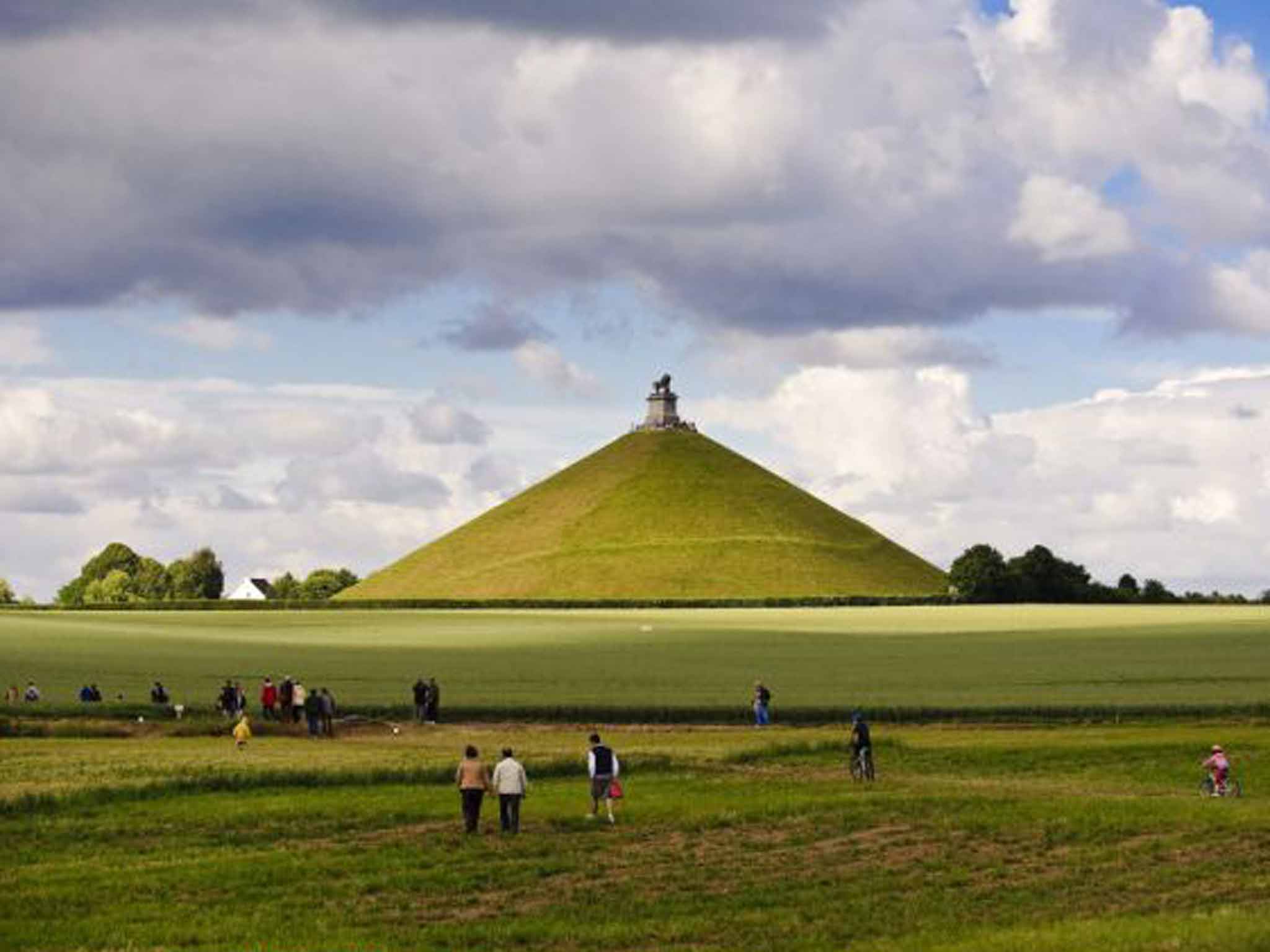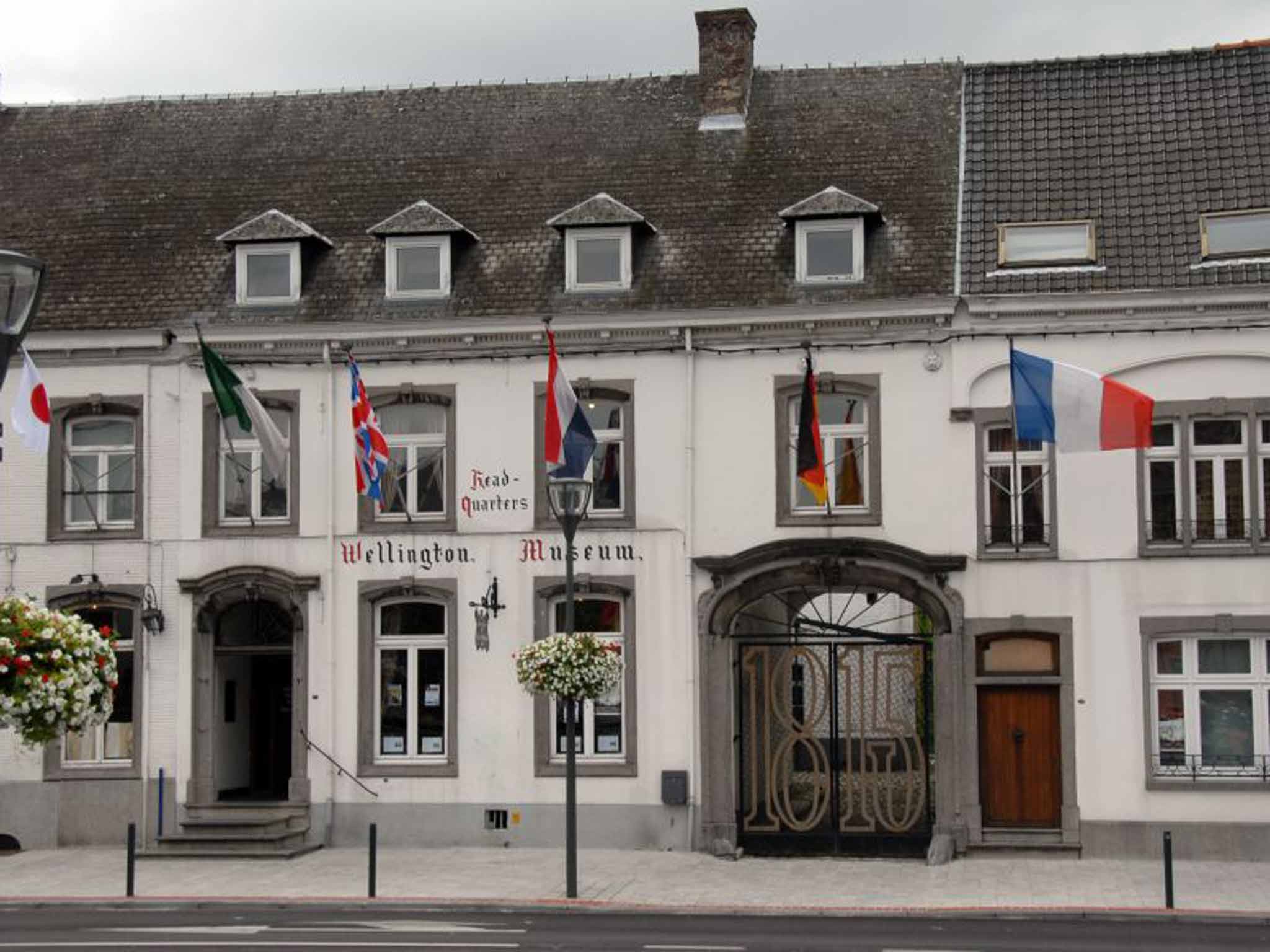Battle of Waterloo: How the French emperor has won the war for tourists' wallets
This week, on its 200th anniversary, the Battle of Waterloo will be re-enacted. But somehow, discovers Gerard Gilbert, the Napoleon brand is more potent than the victorious British commander-in-chief's.

The gift shop at Belgium's Musée Wellington – the museum housed in the former coaching inn where the Duke of Wellington spent the night before and after the Battle of Waterloo in June 1815 – is revealing. Dedicated to the Iron Duke this collection of maps and memorabilia may be, but most of the fridge magnets, mugs and keyrings for sale bear the image of his defeated adversary, Napoleon Bonaparte.
In fact, centuries after this epoch-changing clash, which took place 200 years ago tomorrow, it is clear that the distinctive silhouette of Napoleon in his sideways bicorne hat is the more potent brand than the beak-like nose and the long, rather disdainful face of the victorious British commander-in-chief.
It is the first clue that Waterloo isn't universally viewed the way British triumphalists see it. Indeed, for the Germans (and there were three times as many German soldiers on the field of Waterloo as there were British), the larger and more devastating Battle of Leipzig in 1813, which first sent Napoleon into exile, is the more significant event. And even in Britain, as The Independent's Big Read reported yesterday, Wellington was widely viewed as a reactionary old swine before he was whitewashed by historians.
Still, upstairs at the museum, there is a full-sized waxwork model of Wellington, quill in hand at the very table where he wrote his victory dispatch. And in an adjoining room is one of the three artificial legs worn by cavalry commander Henry Paget, the Earl of Uxbridge, after he was hit on the right knee by canister shot. The celebrated exchange between Uxbridge and Wellington ("By God, sir, I've lost my leg!" "By God, sir, so you have!") is possibly apocryphal, but Uxbridge's stoicism during the amputation was widely witnessed and admired.

And it's not Wellington who dominates the battlefield itself, some four kilometres south of the town of Waterloo (the battle should more accurately have been named Mont-Saint-Jean, though it's hard to see a London railway terminus with such a Gallic moniker). The imposing grass hill known as the Lion's Mound might initially remind British visitors of the leonine triumphalism of Nelson's Column in Trafalgar Square, but in fact lions were also heraldic beasts of the kings of the Netherlands.
This particular animal atop a 43m-high artificial hill, with 226 steps, was constructed on the orders of William I of the Netherlands to mark the spot where his son the Prince of Orange was knocked off his horse by a musket ball (a good thing, too, according to my guide, Jacques, because the prince was a hotheaded ninny whose bungling orders at Waterloo needlessly cost the lives of scores of allied soldiers).
The earth for the mound was scraped off the battlefield, destroying the ridge behind which Wellington hid the bulk of his army, a desecration that irked the duke when he revisited the scene of his great triumph in the 1830s. However, it does afford a magnificent overview of the battlefield, with the site of Napoleon's headquarters at La Belle Alliance and the two strategic farms so gallantly defended by British and German troops, La Haye Sainte and Hougoumont, clearly laid out before you.
Hougoumont, the site of repeated French attacks and the deaths of an estimated 6,500 men, was an active but neglected farm until the regional authority purchased it in 2003. Since then, Project Hougoumont, whose patrons included the 8th Duke of Wellington, has restored the buildings, complete with an education centre and Landmark Trust apartment that sleeps four people. The apartment is booked out during the historical re-enactment that takes place from tomorrow to Sunday, in which about 5,000 actors in uniforms will re-stage the carnage that led to nine times that number of real soldiers being killed or wounded.
More visitors are expected during these three days than during the whole of one typical season. Indeed, you could say that Waterloo had become a rather neglected tourist attraction, something that the province of Wallonia has been busy rectifying with its spanking new underground visitor centre, with 3D films aiming to give tourists a sense of being plunged into battle.
Doing the same job, but more charmingly (as well as being a piece of history in itself) is the Panorama, a huge, 360-degree canvas painted by Louis Dumoulin on the inside walls of a purpose-built cylindrical building, which was commissioned for the battle's centenary in 1915 (by which time, of course, Europe, and Belgium in particular, had more pressing concerns).
You can stay in Waterloo itself, but my advice is to billet yourself in Brussels and to make a day trip of it. Restaurant 1815 on the battlefield is excellent but you'll have far more choice in the capital. You will also get a sense of the distances that the British Army had to travel in the days before Waterloo, when Napoleon's intentions became plain.
The Parc de Bruxelles is as elegant as when Wellington's officers flirted with the ladies in the weeks beforehand – though the exact site of the Duchess of Richmond's ball remains a mystery. Wellington was at this legendary social event when he heard of Napoleon's plans – the night before the Battle of Quatre Bras, which stalled the French advance – and apparently the incorrigible duchess was distraught that the French emperor could be so inconsiderate.
It's also worth visiting the Napoleon Museum in Ligny, a good 20 minutes farther south. The Battle of Ligny, in which Napoleon initially chased off the Prussians, took place just two days before Waterloo. "The museum of the last victory of Napoleon" is emblazoned on the building's façade – further underlining the understandably contorted relationship that the French have with Waterloo – though I never got inside, as it was closed on the Wednesday afternoon when we dropped by. I'm not sure, but I thought I could hear the sound of a Corsican having the last laugh.
Getting there
The writer travelled by Eurostar to Brussels (03432 186 186; eurostar.com)
Visiting there
Musee Wellington, 147 Chausee de Bruxelles, Waterloo (0032 2 357 28 60; museewellington.be).
Restaurant 1815, 367 Route du Lion, Waterloo (00 32 2 384 98 84; restaurant1815.be).
Parc de Bruxelles, Brussels (brussel.be).
Napoleon Museum, 23 Rue Pont-Piraux, Ligny (00 32 71 818 313; si-ligny.be/musee-napoleon).
More information
Join our commenting forum
Join thought-provoking conversations, follow other Independent readers and see their replies
Comments
Bookmark popover
Removed from bookmarks